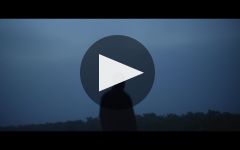Moet & Chandon Grand Vintage Brut Rose 2013
-
James
Suckling -
Wine
Spectator -
The Somm
Journal -
Wine
Enthusiast



Product Details
Your Rating
Somm Note
Winemaker Notes
Coral pink with glints of orange, and fine, persistent bubbles. Initially offering refreshing notes of pink grapefruit and blood orange, followed by small red stone fruit such as morello cherries, finishing with more vegetal notes of wild strawberries and rhubarb. The attack is soft and silky. The initially light, delicate structure becomes more robust in a slightly astringent finish with notes of stone fruit such as plum and damson.
Professional Ratings
-
James Suckling
Lots of strawberry, cherry and some rose petal on the nose and palate. It’s full, but not heavy. Very vinous and delicious. Lovely length, too. Fruity and vivid at the end. This is really excellent with real drink ability and intensity. Yet, it remains elegant. 35% chardonnay and 21% pinot meunier, the rest pinot noir. Drink now.
-
Wine Spectator
Like a dancer, this graceful rosé is lithe and limber yet powered by a sculpted frame, in this case, well-honed acidity and a minerally underpinning. That frame and the satiny mousse support a delicate range of wild strawberry, peach skin and smoked almond flavors with accents of oyster shell, lemon thyme and Mandarin orange peel. Pinot Noir, Chardonnay and Pinot Meunier.
-
The Somm Journal
As vibrant as its upbeat salmon hue, this blend of 44% Pinot Noir, 35% Chardonnay, and 21% Pinot Meunier delivers scents of strawberry, pomegranate, and cherry dappled with baking spice; in the mouth, the taut, glossy texture of peach skin is matched by flavors of stone fruit, orange peel, and hints of green tea.
-
Wine Enthusiast
This latest Moët & Chandon vintage rosé is the product of a cool year, giving intensity to the texture as well as to the acidity. Combined with the light tannins from the red wine in the blend, the Champagne is taut, bringing fruit and freshness together. It obviously can age and will probably be at its best from 2023.
Other Vintages
2015- Vinous
-
Wine
Spectator -
Wine
Enthusiast -
Jeb
Dunnuck -
Robert
Parker
-
Tasting
Panel -
Wine
Spectator -
Wine &
Spirits -
Robert
Parker
- Decanter
-
Wine
Spectator -
Wine
Enthusiast







Learn about Moet & Chandon: its history, the brand and it's iconic Moet Imperial Brut Champagne.
History of Moet & Chandon
Moet & Chandon was founded as Moet et Cie in 1743 by Claude Moet. At the end of the 18th century, Claude's grandson Jean-Remy Moet took over the business and introduced Champagne and the Moet brand to the rest of the world. It wasn't until 1833, when Jean-Remy’s son-in-law, Pierre-Gabriel Chandon de Briailles, joined the business that the House was renamed Moet & Chandon.
The Moet & Chandon Brand
Since its founding, Moet & Chandon has been the Champagne of success and glamour. The important figures of the era, from the Marquise de Pompadour to Napoleon, quickly fell in love with the House’s effervescent wine. Renowned for its achievements and legendary pioneering spirit, Moet & Chandon is synonymous with both cherished traditions and modern pleasures and has helped celebrate life’s most triumphant moments for more than 270 years.
Moet Imperial Brut
Moet Imperial Brut is the House's iconic champagne bottle. Created in 1869, it embodies the unique Moet & Chandon style; a style that distinguishes itself by its bright fruitiness, seductive palate, and elegant maturity.
Moet & Chandon Pronunciation
mow-ett ay shahn-don

What are the different types of sparkling rosé wine?
Rosé sparkling wines like Champagne, Prosecco, Cava, and others make a fun and festive alternative to regular bubbles—but don’t snub these as not as important as their clear counterparts. Rosé Champagnes (i.e., those coming from the Champagne region of France) are made in the same basic way as regular Champagne, from the same grapes and the same region. Most other regions where sparkling wine is produced, and where red grape varieties also grow, also make a rosé version.
How is sparkling rosé wine made?
There are two main methods to make rosé sparkling wine. Typically, either white wine is blended with red wine to make a rosé base wine, or only red grapes are used but spend a short period of time on their skins (maceration) to make rosé colored juice before pressing and fermentation. In either case the base wine goes through a second fermentation (the one that makes the bubbles) through any of the various sparkling wine making methods.
What gives rosé Champagne and sparkling wine their color and bubbles?
The bubbles in sparkling wine are formed when the base wine undergoes a secondary fermentation, which traps carbon dioxide inside the bottle or fermentation vessel. During this stage, the yeast cells can absorb some of the wine’s color but for the most part, the pink hue remains.
How do you serve rosé sparkling wine?
Treat rosé sparkling wine as you would treat any Champagne, Prosecco, Cava, and other sparkling wine of comparable quality. For storing in any long-term sense, these should be kept at cellar temperature, about 55F. For serving, cool to about 40F to 50F. As for drinking, the best glasses have a stem and a flute or tulip shape to allow the bead (bubbles) and beautiful rosé hue to show.
How long do rosé Champagne and sparkling wine last?
Most rosé versions of Prosecco, Champagne, Cava or others around the “$20 and under” price point are intended for early consumption. Those made using the traditional method with extended cellar time before release (e.g., Champagne or Crémant) can typically improve with age. If you are unsure, definitely consult a wine professional for guidance.

Associated with luxury, celebration, and romance, the region, Champagne, is home to the world’s most prized sparkling wine. In order to bear the label, ‘Champagne’, a sparkling wine must originate from this northeastern region of France—called Champagne—and adhere to strict quality standards. Made up of the three towns Reims, Épernay, and Aÿ, it was here that the traditional method of sparkling wine production was both invented and perfected, birthing a winemaking technique as well as a flavor profile that is now emulated worldwide.
Well-drained, limestone and chalky soil defines much of the region, which lend a mineral component to its wines. Champagne’s cold, continental climate promotes ample acidity in its grapes but weather differences from year to year can create significant variation between vintages. While vintage Champagnes are produced in exceptional years, non-vintage cuvées are produced annually from a blend of several years in order to produce Champagnes that maintain a consistent house style.
With nearly negligible exceptions, . These can be blended together or bottled as individual varietal Champagnes, depending on the final style of wine desired. Chardonnay, the only white variety, contributes freshness, elegance, lively acidity and notes of citrus, orchard fruit and white flowers. Pinot Noir and its relative Pinot Meunier, provide the backbone to many blends, adding structure, body and supple red fruit flavors. Wines with a large proportion of Pinot Meunier will be ready to drink earlier, while Pinot Noir contributes to longevity. Whether it is white or rosé, most Champagne is made from a blend of red and white grapes—and uniquely, rosé is often produce by blending together red and white wine. A Champagne made exclusively from Chardonnay will be labeled as ‘blanc de blancs,’ while ones comprised of only red grapes are called ‘blanc de noirs.’
